Cracked Goes Galaxy Brain: 4 Lucky Cosmic Breaks (That Allow Us To Exist)
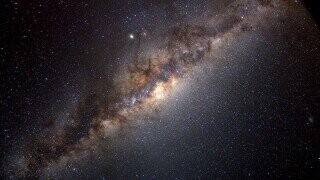
The fact that you're half-reading this right now while enjoying a nice snack, thinking about your dream house, and mentally curating subjects for tonight's "you time" is down to an insane cosmic roulette. An insane cosmic roulette in which each number is its own roulette, and each number on each of those is itself another roulette. And so on, many more times. And you won all of those by inhabiting a universe where gravity, chemistry, and natural laws allow inhabitation.
As do less obvious things, like the unbelievably fortuitous ratio of matter and antimatter: two things that destroy each other upon contact, like an infatuated pair of dope-fiend lovers. If the Big Bang produced equal amounts of both, they'd have blown everything up, and there'd be no atoms left to make humans, animals, and muppets. Fortunately, the Big Bang birthed "one extra matter particle for every billion matter-antimatter pairs."
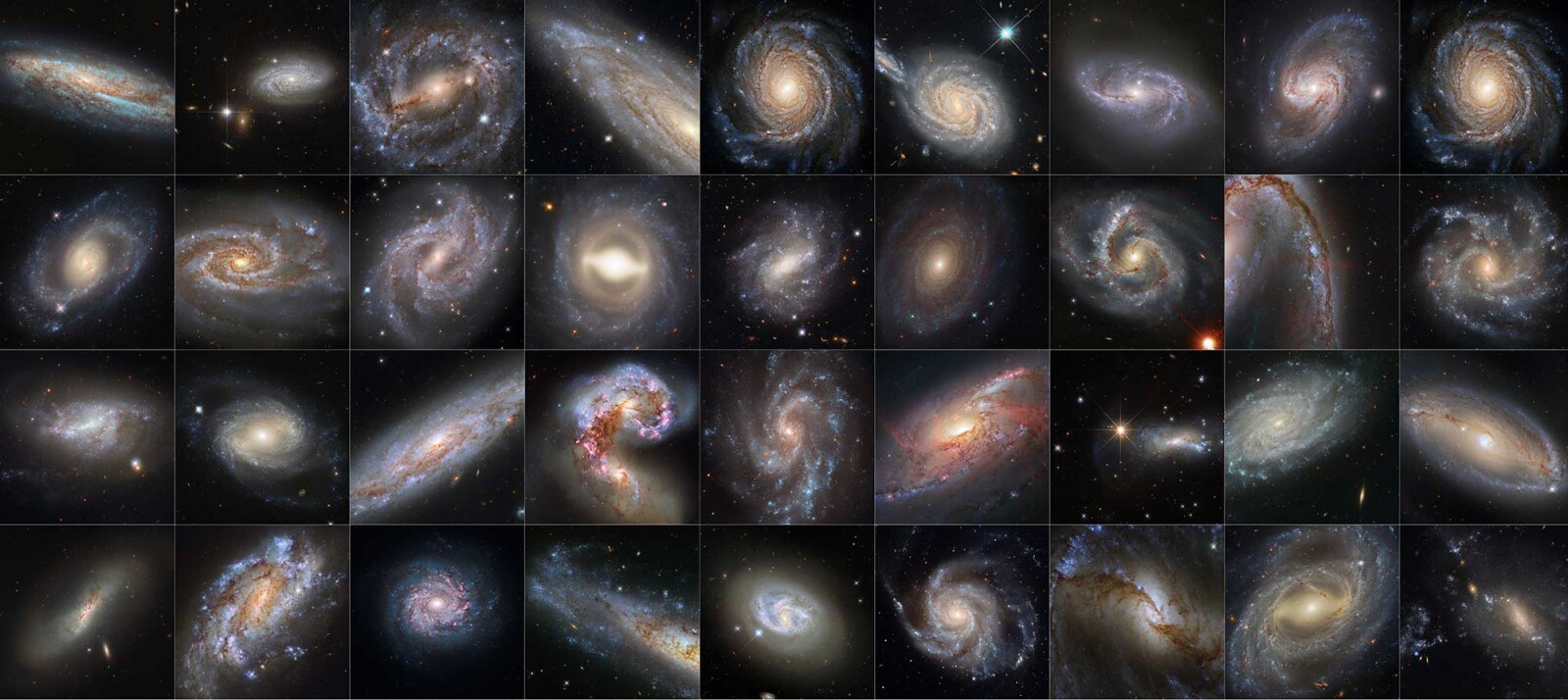
Don't Miss
Therefore, friends and enemies, I implore you to consider this: when one in every 100 Chips Ahoy! cookies is weevil-infested, you chalk it up as a devastating capitalistic loss. Yet our existences depend on many unlikelier odds, including a one-per-billion miscalculation by the Great Creator Lizard right off the bat. Though I respect those whose religions have it that the Great Creator is, in fact, a waterfowl or some kind of binturong ...
First, We Won A Stellar Roulette
Most of the stars in the night sky are red dwarfs. And if you'd eaten your childhood carrots like your mom or that white-lab-coated man known only as "Father" asked, you'd probably see about 75% more stars brightening up the darkness when you looked up. Because three-quarters of the Milky Way's stellar bodies are red dwarfs.
They can be hundreds of times dimmer than the Sun and live for trillions of years, compared to a ten-billion-year lifespan for Sol. Ka-ching! These ubiquitous settings are surely hotspots for alien life. But maybe not, according to exhibit A:

Even though they're the most abundant stars, red dwarfs may be as likely to host viable life as those "local area hotties want to meet you!" ads that hinder our attempts to full-size that picture of a chubby cat sleeping on a glass table.
Also, you'd think red dwarfs would be calm since they're small, only 8% to 50% the mass of the Sun. But they're more lethal. Their interiors are super swirly due to their smallness, yielding much more potent magnetic fields that whip up flares as intensely as the idea of intelligent women whips up low-testosterone men that get rejected in bars. As such, dwarfs don't release flares, they release megaflares, and everything from “-burritos” to "-deth" have taught us that the “mega” prefix does not mess around. Accordingly, megaflare events can emit 10,000 times as much face-vaporizing tumor-osity as a flare from our star.
These flares are weaker in the dwarf's old age but may be too frequent. For example, one dwarf, Barnard's Star, is 10 billion years old and "in a flare state about 25% of the time." At this rate, it could take just 10 million years to deplete a planet's atmosphere. And it took about four billion years of mutation and adaptation to produce your favorite e-girl.

But then again, who says life can't exist in radioactive conditions? If a single measly nuke from the '50s imbued Bruce Banner with superstrength, imagine what kind of Mega-Hulks could emerge after millions or billions of years of flare-enhanced evolution.
Would these creatures develop laser eyes and enmity toward punier, non-irradiated lifeforms? All historical terrestrial evidence says yes. And oh, gee, our closest star Proxima Centauri is a red dwarf with multiple planets, only 4.2 light-years away. Your best bet for post-contact survival? I suggest foregoing all familial loyalties and attempting to curry favor with the invading Mega-Hulks.
Terrifying Cosmic Threats May Be Beneficial In Small Amounts, Like Bee Sting Therapy
Radiation is detrimental to big complicated life, including the planet's most intelligent species, Tursiops truncatus, or the common bottlenose dolphin. But wait, some radiation may be beneficial or even necessary to evolve complicated beings. Radiation could also have been helpful for undeveloped things like the pre-life pre-cum that covered Earth's surface around 4 billion years ago.
During this epoch, radiation streaming from the Sun may have provided a pinball-style bonus multiplier for our fledgling, oceanic world. The radiation that rained down broke up the bigger molecules into many tinier ones, which were more reactive and recombined into the components that allowed life to arise.
Furthermore, on the surface, the Venn Diagram of things good for life, and things bad for life, seems obvious. World-rearranging asteroid impacts? Baaaad. Stellar explosions that bathe planets with billions of nuclear bombs' worth of radiation? Also, not so good.
For example, mutations can be thought of as generally deleterious. As Carl Sagan said, you rarely improve a precision machine (life) by making random changes. But spontaneous mutations are also the basis of evolution. Though they may need to occur at a certain rate to make things like dinosaurs and, later, hopefully, lemurs.
Among mutation-causing things are cosmic rays, literal money shots from exploding massive stars, which shower us with high-energy neutrons and such and are a cause of computing memory errors. What a scary thought: a random ray ejected by a supernova half a universe away could, at any moment and with no warning, wipe out your Gamecube save files.

Or give you diseases. Be they physical disabilities like Exploding Kneecap Syndrome or the mental impairments that primarily manifest on voting ballots.
It's not just cosmic rays but other mutating mechanisms that dictate the shape of life. Not enough of ‘em, and biology stagnates. Too many, and you get The Hills Have Eyes cannibal freaks of horror movies and Missouri backwaters.
Radiation May Have Kept Earth From Freezing With Laughing Gas
About 4 billion years ago, the Sun was only 70% as luminous, but Earth remained a toasty oven. Because even though the Sun was dimmer, it was badder. It wore a leather jacket and chain-smoked Lucky Strikes. And it roiled with massive eruptions that hit baby Earth with a once-per-century superflare… ten times… per day.
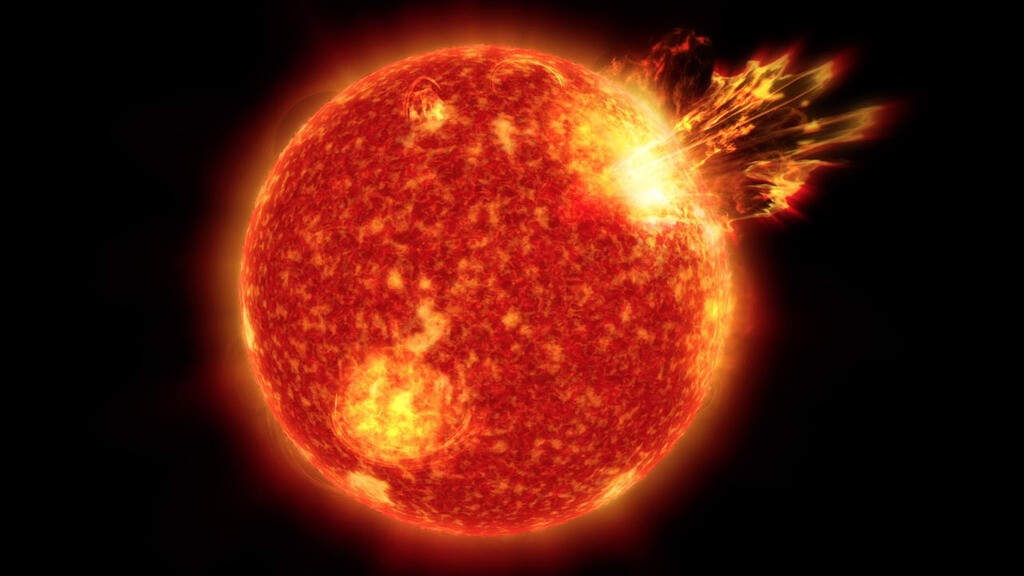
This may have been crucial in keeping Earth an ocean of scummy gunk, rather than an ice ball, by creating laughing gas in the atmosphere – nitrous oxide is 300-times more greenhouse-gas-tastic than carbon dioxide.
Even an asteroid could help if it hits at the right time. Approximately 3.2 billion years ago Earth was a microwaved calzone, thicker and warmer in some areas. When a bunch of asteroids (larger than the dinosaur-deleter) hit, the "intense extraterrestrial bombardment" could have kick-started our plate tectonics, which are a "global thermostat" of volcanism that reverses Ice Ages.
Long-lasting tectonics could be the "best method of regulating a planet's temperature," and Earth's irritable bowels allow our existence. There's no real analog in the solar system, and tectonics may be super rare throughout the universe.
Welcome To The Galactic Habitability Zone (GHZ)
Galaxies have habitable zones. Not only are we swirling our local solar toilet bowl at the right distance around the right kind of star, but we're also (star included) swirling the galactic toilet bowl at the right distance in the right kind of galaxy.
The Milky Way's center is a hot, dusty, polluted death cloud of lethal stars that sterilize anything within light-years. The high population of volatile bodies also means a greater chance of a big supernova Alderaan-ing your ass and entire homeworld into molten oblivion.
But in the outer galactic reaches, there's a scarcity of necessary life elements like carbon, oxygen, and iron. Looking at smaller scales, this GHZ mirrors municipal habitability. Approaching downtown, urban interiors become dangerous with more pollution, reckless taxi drivers, intoxicated vagrants, muggers, and unlicensed Nepalese food vendors.
Likewise, the outer reaches of civic hubs are equally unconducive to intelligence but for the opposite reasons, involving a dearth of evolution-based curricula, hillbilly crossfire after cornhole arguments, libraries whose most advanced book titles end with "For Dummies," and unlicensed Nepalese food vendors.
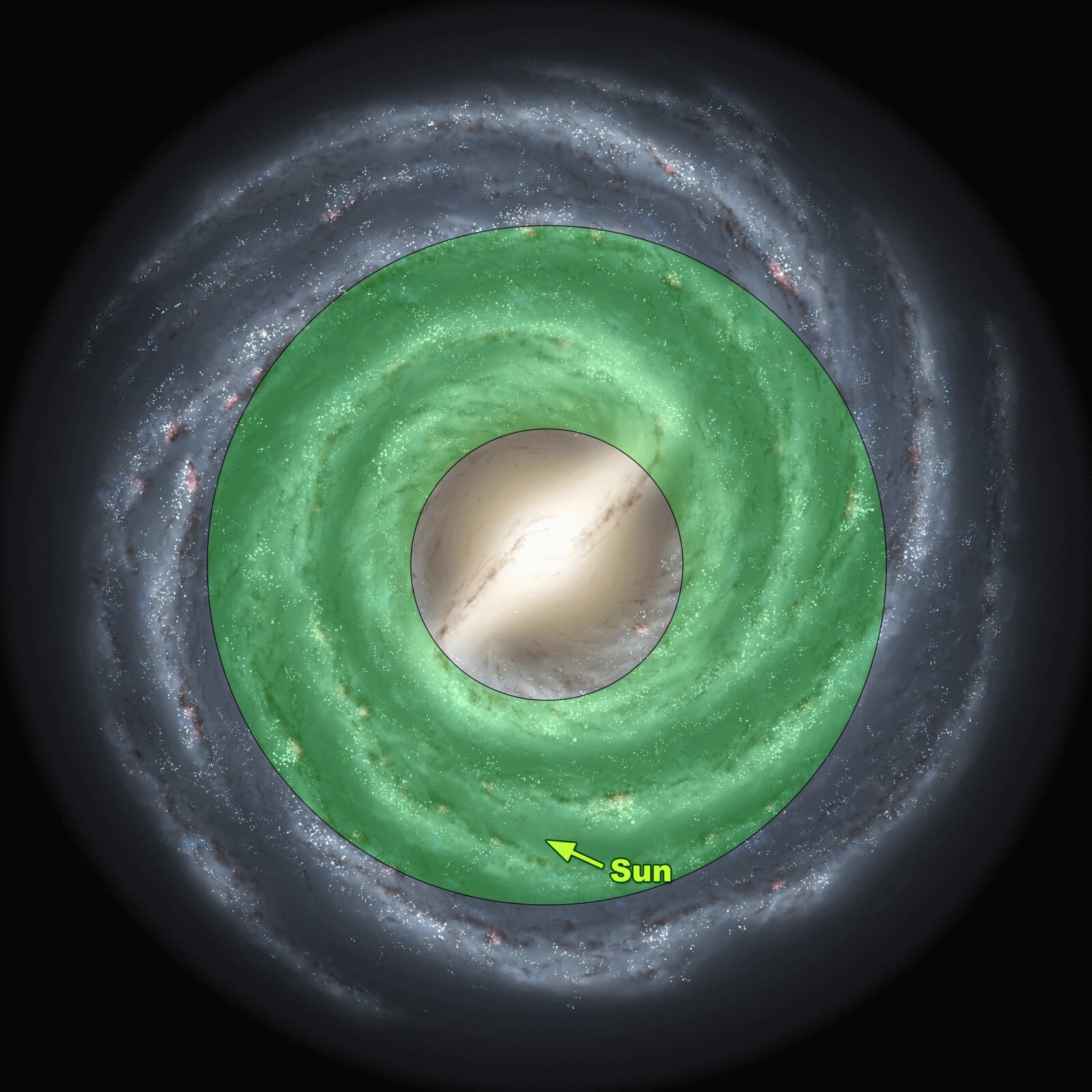
Our GHZ resides just outside the galactic bulge (hehe bulge) and encompasses an area about 13,000 light-years to 33,000 light-years from the center of the Milky Way. So, when choosing the perfect spot to establish a new planetary outpost, even a race far in advance of ours would understandably find it a challenge. Luckily, our human perspectives give us the advantage against even a potentially starfaring civilization, by simply obeying Golden Corral seating strategy.
If you sit too far from the central… I'm going to say trough, then you won’t get to the crab legs in time and possibly catch an elbow to the nose in the process. But if you stray too close to the hectic heart of the buffet you risk occupying the splatter zone, where large and puke-prone bodies orbit timelessly around an irresistible attraction until it destroys them.
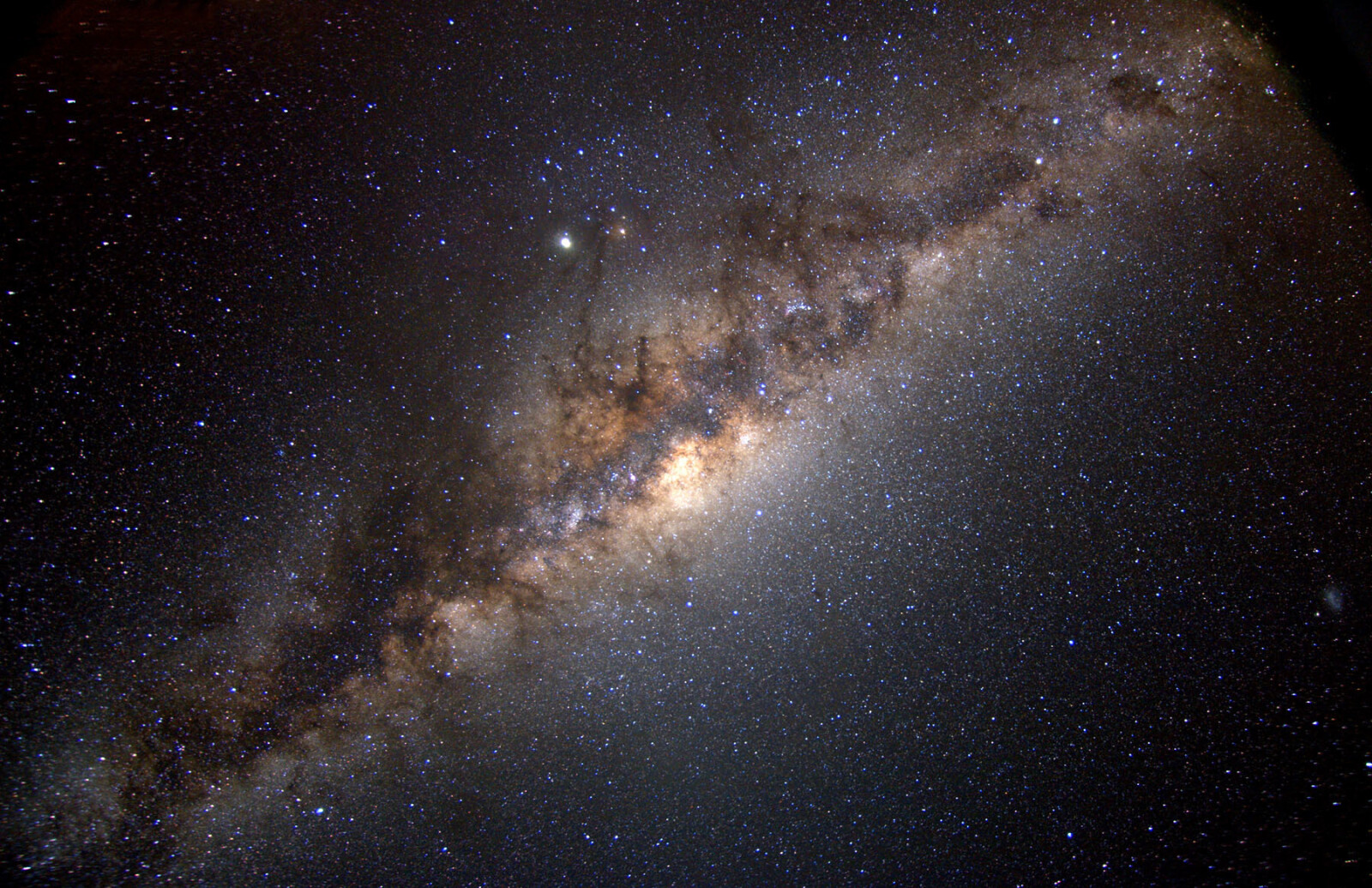
Top image: NASA
